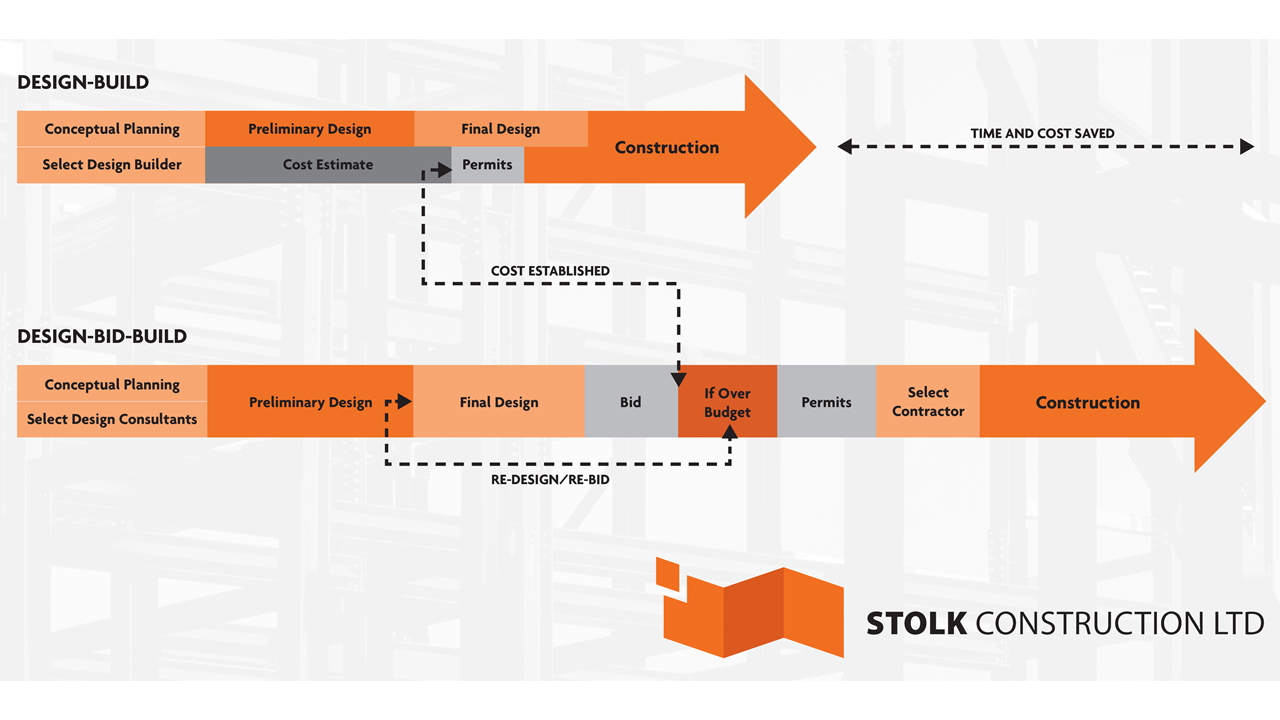
What is Design-Build?
Unlike the general contracting (Design-Bid-Build) method, design-build (D-B) construction relies on one contractor to design and build a project from start to finish. When an owner chooses to work with a design-builder, the design and construction of a project is included under one contract.
Design-build construction is an increasingly popular choice of project delivery because it can save the owner time, money and stress when embarking on a construction project.
At Stolk, our design-build projects are led by experienced Project Management teams who coordinate and oversee the design, planning, permits and construction of the project.
What Are the Benefits of Design-Build Construction?
When you choose Stolk to be your design-builder (or design-build contractor) you can have peace of mind that every detail of your project is being handled by experts who are committed to your long-term success. Choosing the design-build method can have a variety of advantages to the owner of the project:
- More collaboration between designer, builder and specific trades resulting in a more successful project
- One unified team from project start through completion
- Can save the owner money not having to hire separate designers, builders and subcontractors
- Can save an immense amount of time and stress by having one entity leading the design-build process instead of various contractors
- Results in a smoother workflow and more cohesive project timeline since one entity is overseeing pre-construction and construction phases
- Allows the design-build contractor opportunity to assess potential risks during the design phase, and therefore they are able to address potential problems proactively, saving you time and money
Stolk’s Responsibilities as a Design Build Contractor:
At Stolk Construction, we value our partnership relationships and the trust you put in us as your design-builder. When you choose Stolk as your design-builder, you can expect:
- A Pre-Construction Manager to meet with you to discuss your needs and requirements
- Pre-Construction meetings to review preliminary design, discuss revisions, and ensure that the drawings submitted for permit are as close to the final building design as possible; a little time spent prior to construction on accurate design can save lots of time during construction
- Budgetary pricing during the design phase so you can see how changes affect the cost and allow you to prioritize what matters to you, the end user
- A design-build team that will aid in the permit application and approval process
- The smooth transition from the pre-construction phase to the project management phase because of the design team consulting with the build team throughout
- The opportunity to select and consult with trades during the design phase, which may reduce the number of changes during construction and minimize cost overruns
- A Project Management team that will provide timelines and schedules based upon experience and coordinate trades and material supply to maintain progress on the project
- Management of trades for the completion of the project, from excavation through finishing touches, communicating timelines and requirements throughout to maintain schedule and budget
- Assurance that site safety is a priority throughout construction
